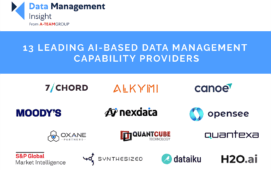Legal entity and securities identifiers have hit the headlines over past months, but their value to the financial industry and how they will be used remains uncertain. Leading an industry panel at this week’s A-Team Data Management Summit, A-Team Group editor-in-chief Andrew Delaney asked panellists for their views on securities identifiers, particularly legal entity identifiers (LEIs) that are being developed as a global standard under the auspices of the G20 mandated Financial Stability Board and will first be used to identify all parties to a financial transaction in the US this summer.
Tony Moulange, an independent consultant and long-time market data practitioner, said: “There is danger in proliferating naming types and standards, and there is also danger in the LEI being introduced on a federated basis. There are many unanswered questions about the LEI, but the industry is concentrating on it as the threat of regulation is approaching.”
Considering the burden of managing multiple identifiers from a user point of view, Colin Gibson, head of data architecture at RBS Global Banking and Markets, said: “Our work on identifiers reflects what regulators ask us to do, but it also drives down business costs and capital requirements. We won’t move away from our own internal entity identifiers, but we will map them to an external identifier scheme such as the LEI. When it comes to instrument identifiers, we expect vendor to use their own identifiers so we will need to map to them too.”
Such parallel running of existing and new identifiers is expected to run for many years, but David Berry, a market data manager at a major international bank and also a member of the Cossiom market data user group, warned: “There is danger and could be confusion in doing this as being sure of exchanging the right fields could be difficult.” On the LEI, he added: “Here is more confusion as the LEI will not be the legal entity master. If vendors don’t want to share their information, regulators must face up to them.”
One such vendor, Thomson Reuters, was represented on the panel by Gerry Buggy, global head of enterprise content at the company. He didn’t comment on the ongoing situation around broader EU access to Thomson Reuters’ RICS identifiers, but on the LEI he said: “We are cautious about reference data and cross-referencing is tough for customers. But our LEI programme has brought us to the cross-referencing table and we will provide cross-referencing for our customers.”
Gibson said RBS concentrates on keeping its internal identifiers in good shape as they are used comprehensively, but the bank also makes sure it can recognise external identifiers, such as the LEI. “We need clear internal and external relationships,” he commented.
Considering the number of identifier schemes in the market, Delaney questioned whether the LEI would simplify the situation. Moulange answered: “If the industry adopts the LEI as a generic marker this will be helpful, but there will still be a lot of mapping technology to build and the federated nature of the LEI could fragment into regional variations.” Berry added: “I am not too worried about the introduction of the LEI. We have internal entity identifiers, but if the law says we must use the LEI and we have no choice, in 48 hours every bank will do so.”
Moving on from the LEI, the proposed Unique Product Identifier (UPI) for OTC derivatives appears to have the potential to cause more confusion. As Gibson observed: “The UPI will be horrendous. The early signs of where it is going do not look good. It was suggested that the number should be meaningless, but it seems that meaningful information is being embedded into the code.”
Subscribe to our newsletter




